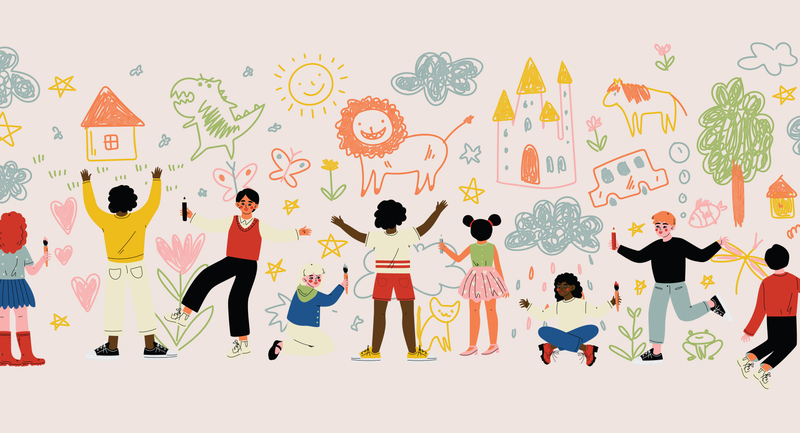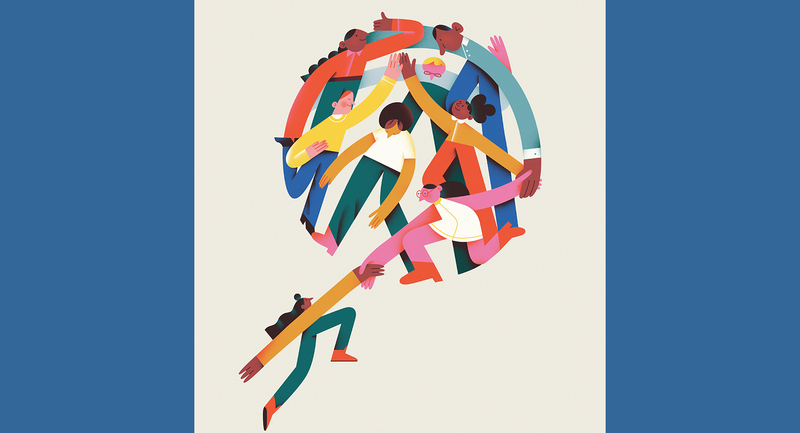I’m often puzzled that we need to be constantly reminded to be kind to each other. Everywhere we look these days, there’s this message to “be kind.” Isn’t the importance of kindness something we should inherently know?
Maybe people feel a reminder is necessary because kindness and civility have been eroded in society. Before social media, it was rare to see public figures brazenly insulting each other or people gossiping about one another openly. Now this seems to be the norm, with whole platforms dedicated to criticism and gossip. People do seem to have forgotten how to be kind. We don’t talk about being diplomatic, being a good citizen, or the necessity of helping others as much as we used to. These big ideas help communities work well together. So, when things like the idea of “giving back” fade, our sense of community starts to fade, too.
Nurturing the Passion to “Give Back”
Fortunately, I’ve seen how educators can help rekindle kindness—and a habit of giving back—in young people. In South Carolina, where I’m a school principal, there’s something cool going on. Some schools are taking measures to ensure students learn to exhibit qualities like kindness, civility, and service to others during their time in school through the South Carolina Graduate Competencies. These competencies—such as engaging as a citizen, leading teams, and designing solutions—aren’t just about academics, but about growing as a whole person and helping the community.
Competencies like engaging as a citizen, leading teams, and designing solutions aren’t just about academics, but about growing as a whole person.
Deliberately imparting such values and attitudes is important because good citizenship doesn’t happen overnight. It comes from developing qualities like kindness and being taught to appreciate and practice skills like valuing others’ perspectives and working toward a common purpose.
The concept of giving back to the community is deeply personal to me, rooted in my life experience and values passed down through generations. I’m the daughter of a military pilot who retired to become a Navy Junior ROTC teacher. From my father’s commitment to volunteerism with organizations like the Knights of Columbus to my 93-year-old great-grandmother’s volunteer work making footstools for residents of her nursing home, the spirit of responsible citizenship has been a constant in my family’s legacy. I’ve seen many examples close to home of people making the world a better place and even being willing to risk their lives to do so. For me, making a positive contribution is a lifelong commitment.
Service Learning in My District
One way I encourage students to give back in my district (where I’ve been a principal in several schools) is through service learning. With service learning, as students help others, they learn skills or content connected to the curriculum. At one district high school, we adopted a house system (like in Harry Potter). All students, teachers, and classified staff were placed into a house. Each house had a particular meaning and was tied to a certain country or culture, and created a service project connected to a particular social issue. For example, the House of Protos was the house of wisdom and tied to Greece. Students in this house decided on a project that would support Alzheimer’s: their school fundraising walk raised over $300.
Integrating such projects into the school day helps students who may not naturally gravitate toward volunteerism cultivate needed civic skills and values, gain confidence, and realize their potential as citizens. It helps students see service differently. One day when students and staff were loading into cars food they’d gathered for the community, one said, “Dr. Hall, I thought community service was only for when you’re in trouble.”
This statement highlights a common misconception among students, that community service is something only done when one is in trouble—or on the flip side, that such projects are only for the “best and brightest.”
Service learning isn’t just about the work; it’s about building confidence and communication skills that will be useful to each student throughout life. Imagine a very shy student who starts working on a service-learning project with classmates. As they share their ideas and listen to others, they realize their voice matters. This kind of awakening is at the heart of schools developing responsible citizens, helping students grow as engaged members of their communities.
How does participating in a community build kindness? For one thing, when teachers explicitly teach life skills students need to work in a community, they can use common language to push students from a “me” centered world to a “we” centered one. Drawing on the South Carolina Graduate Competencies, I’ve created a rubric that describes what attributes, like participating well in the community, look like on a continuum of 1–6. Students build civic skills as they self-reflect with questions from this rubric, like “Do I include my peers and treat everyone fairly as we work together?” (level 2 on the rubric) or “Do I use strategies that promote fairness, inclusivity, and appreciation for difference in groups?” (level 5).
Promoting Social Justice
I also champion service learning because it promotes the values of community, equality, and social justice. I believe all people are equal and that everyone has a responsibility to work toward a more just, equitable world. Service learning provides a way to help students who also believe in trying to create a better world put these beliefs into action as they address social issues and promote change (and those who haven’t thought much about social justice might start doing so). Many students involved in service learning develop a sense of purpose in their lives. Working with others to address social issues, students get a deeper understanding of the challenges people or groups different from them face. They begin to appreciate the diversity of the human experience and learn strategies that lead to fairness, inclusivity, and affirming people’s strengths.
Students involved in service learning develop a sense of purpose in their lives.
In a local event, Valley Empty Bowl, some district students crafted ceramic bowls for charity. The bowls were part of an event where people could buy tickets to come enjoy foods donated from local restaurants and take a bowl home. The money raised ($1,354 in 2023) went to groups that help people in our community who are elderly or working at such low-paying jobs they can’t make ends meet. Students gained a deep understanding of diverse perspectives. They worked with an artist who traces his ancestry back to people enslaved during the Civil War. He modeled how he researched his family history, guided students to identify their own cultural backgrounds through writing, and encouraged them to tap into something from their cultural identity as they made their bowls.
Service learning is not just about doing one-off projects for the community; it’s about learning things, too—like how to work with others or lead a team to accomplish something. It’s about helping students become citizens who know they can make a difference. I urge my fellow educators who haven’t yet tried service learning with students to consider how they can give students this opportunity to give back—and become kinder.









